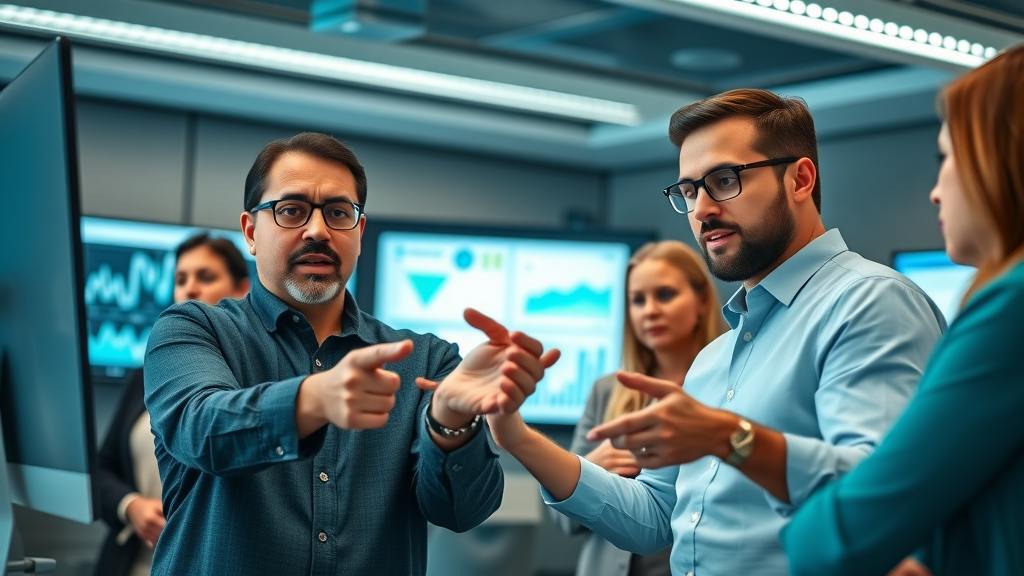A Surprising Truth: The Power of Nonprofit Organizational Culture
Opening Hook: Did you know that over 60% of nonprofit leaders say their nonprofit organizational culture is the most influential driver of success – even more than strategic planning or fundraising capability?
Nonprofit organizations achieve their mission not just through resources, vision, or even strategic planning, but largely because of the organizational culture they foster. According to recent studies, nonprofit leaders consistently identify nonprofit organizational culture as the single greatest factor in determining whether an organization flourishes or falters—surpassing even the influence of fundraising capability or strategic direction. This insight reveals a powerful, sometimes overlooked truth: culture is often the "hidden engine" spinning behind every successful nonprofit initiative. If your team members, staff, board members, and volunteers feel valued, aligned with core values, and committed to the mission, your organization is far more likely to thrive—even when external realities are tough.
In this educational guide, you'll discover not only what nonprofit organizational culture is, but exactly why it matters, how it is shaped, and how you can actively improve it to better serve your organization and its community. By the end, you'll have actionable strategies to elevate your work environment and make a real, lasting impact.

What You'll Learn About Nonprofit Organizational Culture
- Understand what nonprofit organizational culture is and how it differs from nonprofit culture in other sectors
- Discover the types and models of organizational culture relevant to nonprofit work
- Learn how core values and a culture of philanthropy are built and maintained
- Explore tools for performance management and combating burnout in nonprofit organizations
- Find actionable steps to improve your nonprofit culture and align with organizational goals
Defining Nonprofit Organizational Culture and Nonprofit Culture
What is the Culture of a Non Profit Organization?
The culture of a nonprofit organization embodies its shared values, beliefs, behavioral norms, and the unique spirit that connects its diverse team members. Unlike for-profit cultures that may emphasize competition or profit growth, nonprofit organizational culture roots itself in the mission, collaborative work environment, and the drive to serve others. This culture shapes how staff members, board members, and volunteers interact, how decisions get made, and how organizational goals are set. It also determines how feedback loops are established and how personal relationships are developed within the organization. Creating a thriving culture takes intentional effort; it demands honest communication, clear core values, and a deep sense of mission alignment—turning every team meeting and project into an opportunity to reinforce the organization and its mission.
Defining the nonprofit culture can often be as much about what is unseen—the shared expectations, silent assumptions, and unwritten rules—as what is visible through mission statements or strategic plans. A strong nonprofit organizational culture lifts team members up, creates an inclusive culture where all voices feel valued, and knits together the professional and personal goals of each member towards a common community mission. This nuance is what truly separates high-impact nonprofit organizations from the rest.

The Relationship Between Organizational Culture, Nonprofit Culture, and Core Values
Organizational culture and nonprofit culture are deeply intertwined, especially with core values serving as their bedrock. In nonprofits, these values guide every decision, inform every interaction, and help maintain consistent alignment with the organization's mission. When organizations clearly articulate their core values—such as integrity, accountability, diversity, or transparency—and ensure team members embody them daily, they build trust both internally (among staff and volunteers) and externally (with donors and community members). This trust is not a byproduct; it is a primary building block of nonprofit success.
The unique relationship among these concepts creates a cycle: core values cultivate a strong culture, that culture drives mission results, and success reinforces those values anew. Leaders must make clear how these beliefs translate into daily actions, enabling staff members and volunteers to connect their work to bigger-picture impacts. As one leading nonprofit expert aptly put it:
“Culture is the invisible hand that shapes behaviors, motivates people, and drives mission-driven outcomes.” — Leading Nonprofit Expert
Key Elements and Values in Nonprofit Organizational Culture
Core Values as the Foundation
Core values are more than a list on your nonprofit’s website—they are the beating heart of your organization’s culture. These guiding principles shape every aspect of nonprofit work, from how board members interact during a team meeting to how staff members approach community outreach. Core values drive decision-making, spark inspiration, and shape your organization’s approach to every challenge, enabling long-term mission alignment. Nonprofits that clearly define and communicate their core values often experience increased unity, stronger trust, and a work environment where all team members feel invested and valued.
Importantly, uplifting core values helps steer the organizational culture in a direction that supports positive personal relationships, encourages feedback loops, and creates an inclusive culture. The professional and personal satisfaction that comes from knowing your efforts are making a difference allows each team member to thrive. Whether your nonprofit prioritizes transparency, equity, compassion, innovation, or sustainability, strong values are the anchor that stabilize and energize the organizational ship.

Culture of Philanthropy: Creating Shared Commitment
A culture of philanthropy extends well beyond fundraising; it is about ensuring everyone in the organization—staff, volunteers, board members, and supporters—embraces the core value of generosity and shared responsibility for sustaining the mission. In thriving nonprofit organizations, a culture of philanthropy is visible in every action and decision, not just within the development team but organization-wide. This shared commitment encourages personal giving, continuous advocacy, and an authentic connection to the organization's impact.
When a nonprofit culture is deeply rooted in philanthropy, team members and supporters alike see themselves as co-investors in mission outcomes. It creates a self-sustaining cycle where generosity and gratitude are not seasonal, but daily norms. This approach strengthens not only external fundraising but also internal performance management, making it easier to achieve organizational goals and foster community trust.
Mission Alignment and Organizational Goals
Aligning nonprofit organizational culture with mission and organizational goals is vital. When the mission is at the core of daily practices, every initiative and every role—whether filled by a director, a volunteer, or a community member—feels purposeful and consistent with organizational strategy. A culture that keeps the mission top-of-mind encourages team members to innovate, collaborate, and navigate even the most challenging situations with resilience.
Mission alignment is a critical factor in strong performance management. When everyone is motivated by shared organizational goals and values, productivity rises, job satisfaction increases, and burnout risk decreases. Organizational cultures that promote open communication, shared vision, and clarity about roles and expectations are typically the ones that see sustained growth, even in a rapidly changing nonprofit sector.
- Examples of Core Values in Nonprofit Organizations
- Equity and Inclusion
- Transparency and Accountability
- Compassion
- Collaboration
- Innovation
- Community Engagement
- Stewardship
Unpacking the Four Types of Organizational Culture in Nonprofits
What are the 4 Types of Organizational Culture?
Nonprofit organizations often embody a blend of four key organizational cultures: Clan, Adhocracy, Market, and Hierarchy. Each type offers unique strengths and is suited to different missions, structures, and team dynamics. Understanding these cultures is essential for nonprofit leaders seeking to shape a thriving culture that aligns with their specific needs.
Clan culture emphasizes collaboration, loyalty, and strong relationships; ideal for organizations valuing mentorship and teamwork. Adhocracy culture encourages innovation, risk-taking, and adaptability—perfect for nonprofits addressing fast-changing community needs. Market culture focuses on competition, outcomes, and measurable results, suiting organizations with aggressive organizational goals. Finally, Hierarchy culture prioritizes structure, processes, and consistency, best fitting nonprofits requiring tight compliance, clear reporting, and efficiency. Successful nonprofits are self-aware about the culture that fits their mission and are deliberate about nurturing it.

| Types of Organizational Culture | Characteristics | Advantages | Limitations |
|---|---|---|---|
| Clan | Team-oriented, collaborative, nurturing | High morale, strong loyalty, engaged staff | Can resist change, less focus on outcomes |
| Adhocracy | Innovative, risk-taking, adaptive | Encourages creativity, quick to respond | Unpredictable, can lack structure |
| Market | Results-driven, goal-focused, competitive | High productivity, motivates achievement | Stressful, may experience burnout |
| Hierarchy | Structured, process-oriented, stable | Efficient, clear processes, reduced risk | Inflexible, can stifle innovation |
What are the Four C's of Organizational Culture?
Experts often summarize the building blocks of nonprofit organizational culture as the Four C's: Collaboration, Creativity, Communication, and Commitment. Collaboration ensures team members work effectively together for shared goals. Creativity unlocks new ways to solve community challenges. Communication—both formal and informal—maintains trust, supports feedback loops, and drives inclusion. Commitment means everyone, from board members to volunteers, is dedicated to the organization and its mission, providing stability and shared responsibility. These qualities fuel a thriving culture and help nonprofits overcome obstacles in pursuit of their organizational goals.
Integrating the Four C’s into daily practice sets the foundation for not only achieving but sustaining lasting success. It reinforces core values, strengthens professional and personal connections, and creates an environment where team members are empowered to make a difference.
How Nonprofit Organizational Culture Impacts Nonprofit Work
The Influence of Culture on Volunteer Retention and Board Members
The nature of a nonprofit’s culture has direct and significant consequences for volunteer retention, board member engagement, and overall nonprofit work. Positive organizational culture makes volunteers and staff members feel valued, leading to increased satisfaction and lowered turnover. When the environment encourages open communication, transparency, and celebrates contributions, even occasional volunteers are more likely to establish lasting personal relationships with the organization.
For board members, culture determines not only how effectively decisions are made, but also how well those decisions are implemented by staff and volunteers. A collaborative, mission-first culture empowers everyone—at every level—to surpass simply “supporting” the work and become true advocates for the organization's mission. As a result, nonprofits with robust cultures often see higher retention, improved performance management, and smoother alignment with organizational goals.
How a Positive Nonprofit Culture Reduces Burnout
Burnout is a persistent challenge in nonprofit organizations, where teams face emotionally demanding work and often limited resources. However, a positive nonprofit culture—grounded in support, recognition, and mutual care—can be a powerful antidote. Organizations that build systems for receiving feedback, celebrate successes, and focus on manageable workloads protect team members from feeling overwhelmed or neglected. Recognizing individual achievements and ensuring staff members feel valued directly counteracts the stressors that lead to burnout.
Feedback loops, peer support programs, and frequent team meetings to discuss workload and professional growth all contribute to a thriving culture where the risk of burnout is minimized. Nonprofits must be vigilant for early warning signs and move swiftly to maintain a healthy balance, ensuring every person—whether working in the office or on the frontlines—can contribute fully and sustainably.
- Warning Signs Culture May Lead to Burnout
- Lack of communication or unclear expectations
- High staff or volunteer turnover
- Chronic overwork with little recognition
- Low engagement or morale during team meetings
- Resistance to feedback or change
Performance Management and Achieving Organizational Goals
Building Effective Performance Management Systems
Performance management is essential for linking individual efforts to broader organizational goals. Strong nonprofit organizational culture supports this by providing clear expectations, regular feedback, and transparent evaluation systems. A well-designed performance management process goes beyond annual reviews—it becomes part of daily work habits and team meetings, offering multiple opportunities for staff members and volunteers to understand their professional growth and impact.
To be effective, performance management must be built on the core values and mission of the organization. Goals need to be transparent and attainable, and processes must be supportive, rather than punitive. By creating a culture where performance management is seen as a positive, developmental tool, organizations increase teamwork, motivation, and long-term retention. In this environment, everyone can see how their individual actions contribute to community-wide success.

Best Practices for Aligning Culture With Organizational Goals
Aligning culture with strategic and organizational goals requires more than periodic reminders or annual retreats; it must be woven into the daily fabric of nonprofit work. Best practices for doing so include regular training for staff and board members on culture and mission, establishing explicit links between core values and organizational goals, and fostering open dialogue about culture in every important discussion or team meeting.
Effective nonprofits build structures where team members and leaders alike are recognized for living the values and contributing to the mission. Incentives for collaboration, programs for professional and personal growth, and transparent feedback loops all help ensure that the nonprofit culture and performance management systems support—not compete with—organizational strategy.
"Only organizations with deliberate performance management and the right organizational culture thrive in the long run." — Nonprofit Consultant
Nonprofit Leadership: The Role of Board Members and Leadership Teams
Why Board Members Shape Nonprofit Organizational Culture
Board members wield significant influence over nonprofit organizational culture. Their leadership, priorities, and example shape how the executive director and staff approach their own responsibilities. When board members champion core values and embody a culture of philanthropy, they create a ripple effect, inspiring widespread adoption across the organization. Conversely, a disengaged or inconsistent board can undermine staff morale, trigger confusion about organizational goals, and even lead to burnout.
To foster a thriving culture, successful boards maintain open channels of communication, support leadership development, and actively reinforce the mission at every opportunity. This alignment ensures the nonprofit organization remains adaptive, mission-driven, and resilient—regardless of external pressures.
Collaborative Leadership to Advance a Culture of Philanthropy
Collaboration between leadership teams and board members is vital for advancing a culture of philanthropy in nonprofit organizations. Joint initiatives—like shared fundraising campaigns or cross-departmental strategy sessions—demonstrate that every team member has a stake in philanthropic outcomes, not just those in development roles. This sense of collective ownership broadens the definition of success, prioritizing long-term mission impact over short-term gains.
Collaborative leadership fosters trust, encourages new ideas, and ensures the sustainability of a nonprofit organization’s mission. By building personal relationships and establishing shared goals, leadership ensures team members feel both empowered and accountable, creating the kind of thriving culture essential for lasting impact.
Best Organizational Structure for a Nonprofit Organization
What is the Best Organizational Structure for a Nonprofit Organization?
The best organizational structure for a nonprofit depends on its size, mission, and operational needs. Commonly, nonprofits adopt functional, matrix, or team-based structures. Functional structures group staff members by specialized roles, matrix structures encourage flexibility and teamwork across disciplines, and team-based designs prioritize collaboration, personal relationships, and shared leadership. The right structure improves feedback loops, keeps everyone focused on organizational goals, and supports both core values and the delivery of mission-driven outcomes.
No single structure is universal—high-performing nonprofits frequently evaluate and refine their frameworks to support professional growth and adapt to new challenges. A clear, thoughtful structure creates a supportive work environment, reduces confusion, and promotes efficiency in nonprofit work.

Case Study: How Organizational Structure and Culture Interact
Consider a mid-sized nonprofit that transitioned from a traditional, hierarchical model to a team-based structure focused on collaboration and flexibility. Leadership created new cross-functional project teams, encouraged open communication, and empowered team members at all levels to initiate important discussions. In just one year, the result was remarkable: higher engagement, improved retention of both staff and volunteers, and a measurable increase in mission outcomes like program expansion and donor involvement.
This case illustrates that organizational structure and culture are not isolated elements—they powerfully influence each other. By designing structures that enhance core values and prioritize inclusive, mission-driven work environments, nonprofits lay the groundwork for ongoing success.
Sustaining a Healthy Nonprofit Organizational Culture
Strategies for Continuous Improvement
Sustaining a healthy nonprofit culture is a continuous process. Organizations must regularly evaluate their culture, encourage feedback from all team members, and provide ongoing training on issues like diversity, ethics, and leadership. Strong leadership sets a tone of openness, learning, and adaptability—enabling the nonprofit to respond to internal and external changes while staying mission-focused.
Other effective strategies include celebrating small wins, making clear connections between daily work and organizational goals, and keeping communication lines open between board members, staff, and community stakeholders. A commitment to continuous improvement is the hallmark of every thriving culture.
- Actionable Steps to Enhance Nonprofit Culture
- Conduct regular culture assessments and feedback surveys
- Develop clear communication protocols and feedback loops
- Invest in ongoing staff and leadership development
- Recognize and celebrate achievements in team meetings
- Align reward systems with core values and mission impact
Overcoming Barriers and Measuring Progress
Barriers to a thriving nonprofit culture often include entrenched habits, resistance to change, and unclear role definitions. Overcoming these requires transparent leadership, patience, and measurable progress tracking. Nonprofits should set clear culture-related goals and gather data on retention, engagement, and satisfaction among staff members and volunteers to benchmark improvement. Creating space for honest dialogue about challenges, and acting swiftly on feedback, is key to sustained culture change.
Measuring progress can include regular pulse surveys, focus groups, and benchmarking against sector standards provided by networks like the Council of Nonprofits. By continuously tracking and sharing these metrics, leaders can make clear the value and impact of an intentional culture strategy.
Watch: "Nonprofit organizational culture explained with real-life examples, interviews with nonprofit leaders, and visual walkthroughs of thriving workplace environments."
Frequently Asked Questions (FAQs) on Nonprofit Organizational Culture
How can organizations assess their current nonprofit organizational culture?
Organizations can assess their nonprofit organizational culture through anonymous staff surveys, focus groups, one-on-one interviews, and culture audits. Regularly gathering feedback and tracking key indicators like staff turnover, volunteer retention, and engagement scores helps nonprofit leaders identify both strengths and growth areas. Open dialogue and transparency are critical in making every team member feel valued and ensuring that improvement efforts succeed.
What are effective ways to shift a stagnant nonprofit culture?
Shifting a stagnant nonprofit culture starts with leadership commitment and honest self-assessment. Effective strategies include establishing clear core values, involving team members at every level in important discussions, investing in training, and openly addressing concerns about burnout or resistance to change. Positive changes become sustainable when they are reinforced in daily practices, recognized in team meetings, and aligned with mission goals.
How does nonprofit organizational culture impact fundraising?
A strong nonprofit organizational culture enhances fundraising by fostering a culture of philanthropy, making every engagement with donors and community members more authentic and meaningful. Team members who feel connected to the mission and valued in the workplace naturally become more passionate advocates, leading to better donor stewardship and more effective campaigns.
How can board members actively support a positive culture of philanthropy?
Board members can support a positive culture of philanthropy by modeling generosity, participating in fundraising, recognizing staff and volunteer contributions, and ensuring philanthropy is a regular item in board meetings. Their active, visible commitment signals to the entire organization that everyone has a role in sustaining the mission.
People Also Ask: Additional Questions on Nonprofit Organizational Culture
What is the culture of a non profit organization?
Answer: Nonprofit organizational culture refers to the shared values, beliefs, behaviors, and social norms that define how people work together within a nonprofit organization to achieve their mission.
What are the 4 types of organizational culture?
Answer: The four types are Clan Culture, Adhocracy Culture, Market Culture, and Hierarchy Culture—each influencing how nonprofit organizations operate and succeed.
What are the four C's of organizational culture?
Answer: The four C’s—Collaboration, Creativity, Communication, and Commitment—are critical to building a strong nonprofit organizational culture.
What is the best organizational structure for a nonprofit organization?
Answer: The best structure depends on the organization’s size and mission, but commonly used models include functional, matrix, and team-based structures designed to facilitate collaboration and agility.
Key Takeaways: Why Nonprofit Organizational Culture Matters
- Nonprofit organizational culture shapes mission success, staff retention, and community impact
- Aligning core values and a culture of philanthropy prevents burnout and strengthens performance management
- Leadership and board members are essential for fostering and sustaining positive culture
Conclusion: Elevating Your Organization Through Nonprofit Organizational Culture
Recap: Action Steps to Foster a Thriving Nonprofit Culture
Foster open communication, define and live core values, invest in performance management, align structure with culture, and make continuous improvement a priority.
Final Thoughts: Why Now Is the Time to Invest in Organizational Culture
A strong nonprofit organizational culture is not a luxury—it's a necessity for achieving lasting success and community impact.
Call to Action: Call me the Chaplain 786-333-5270
Sources
- https://www.councilofnonprofits.org/tools-resources/organizational-culture-nonprofits
- https://www.bridgespan.org/insights/library/organizational-effectiveness/culture-in-nonprofits
- https://www.hfrq.org/nonprofits/best-practices-nonprofit-organizational-culture
- https://www.stanford.edu/news/what-is-nonprofit-culture/
- https://www.nonprofithub.org/nonprofit-culture-strategies/
Understanding and cultivating a strong nonprofit organizational culture is pivotal for achieving mission success and fostering a positive work environment. To delve deeper into this topic, consider exploring the following resources:
- “Building a Strong, Positive Culture in Nonprofit Organizations” (thenonprofitprof.com)
This article outlines various types of nonprofit cultures, such as donor-centric and inclusive cultures, and provides strategies for establishing and maintaining them.
- “5 Steps to Creating a Winning Culture at Your Nonprofit” (plantemoran.com)
This piece emphasizes the importance of mission, consistency, involvement, and adaptability in building a successful organizational culture, offering practical steps to implement these elements.
By engaging with these resources, you’ll gain valuable insights and actionable strategies to enhance your nonprofit’s organizational culture, ultimately leading to greater impact and engagement.
 Add Row
Add Row  Add
Add 




Write A Comment